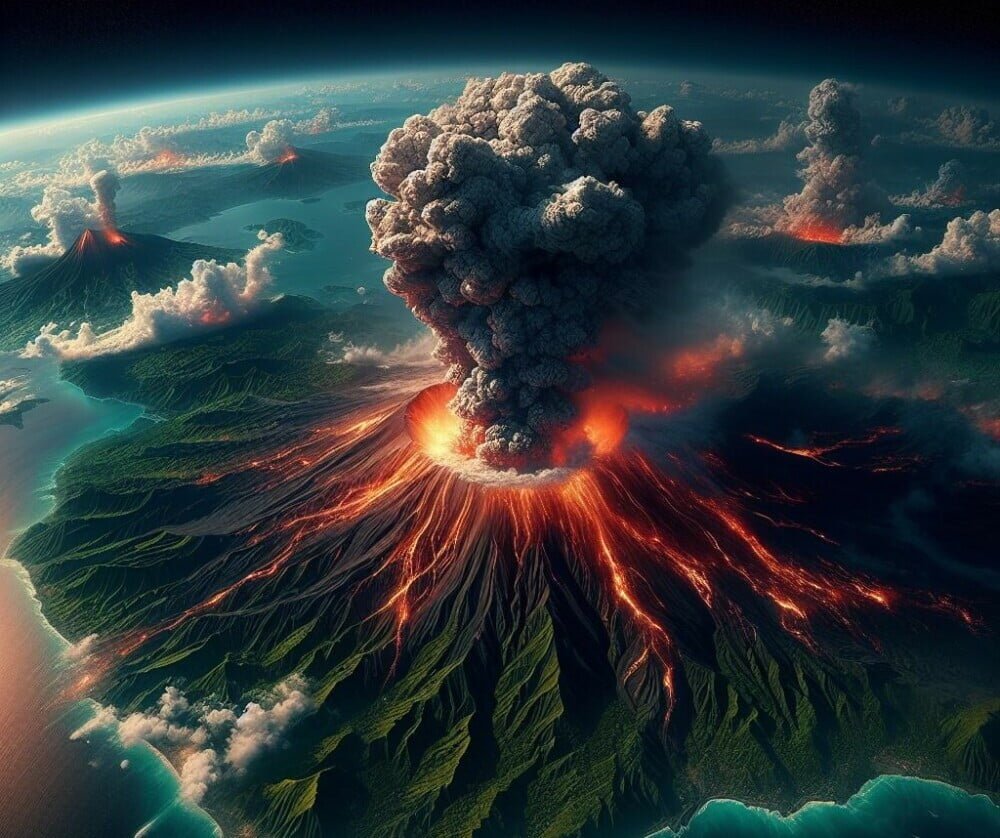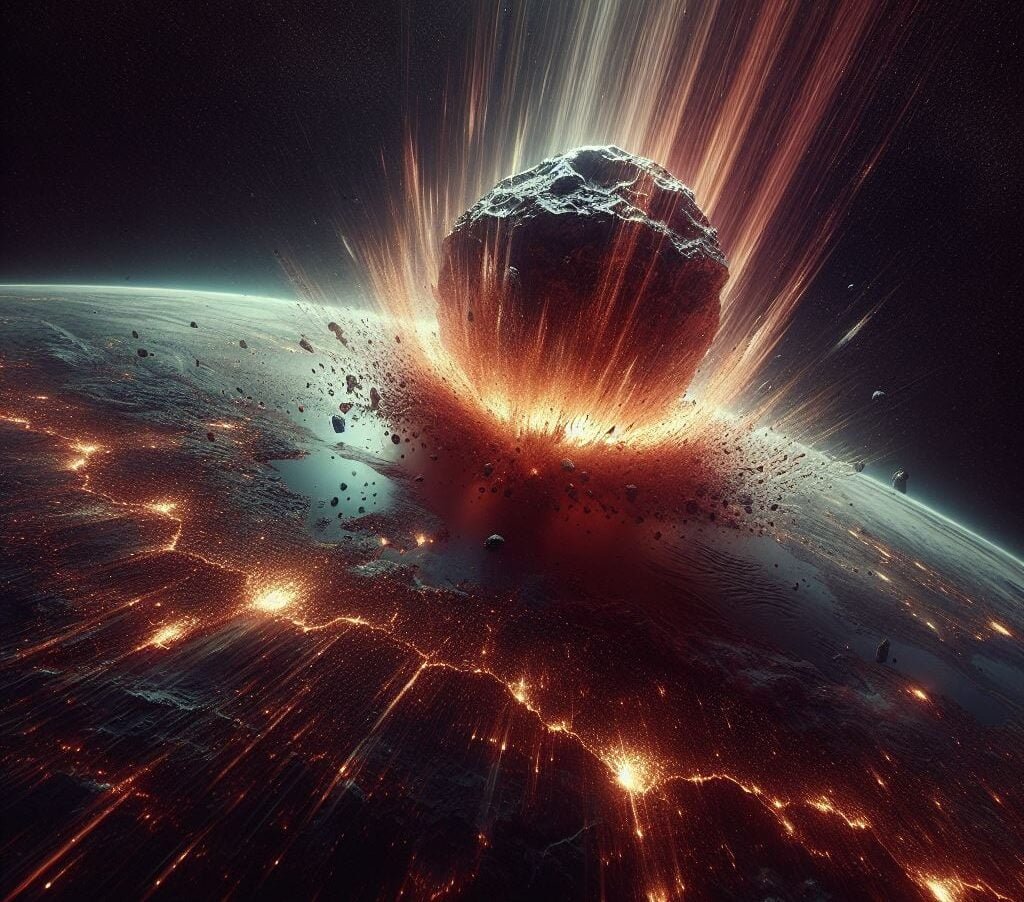The history of our planet is marked by cataclysmic events that have shaped the course of life. Among these, the Permian-Triassic extinction event, known as The Great Dying, stands as the largest mass extinction in Earth’s history. This event, triggered by extreme volcanic activity, wiped out nearly 90% of marine species and 70% of terrestrial vertebrate species. Yet, life persisted, and Earth underwent a process of recovery and adaptation. Understanding the mechanisms behind such catastrophic events and whether the Earth is self-regulating its climate provides valuable insights into the past, present, and future of our planet.
Exploring The Great Dying
The Permian-Triassic extinction event remains a topic of intense scientific inquiry. Geological evidence points to massive volcanic eruptions in the Siberian Traps as the primary cause. These eruptions released immense amounts of greenhouse gases and toxic chemicals into the atmosphere and oceans, leading to rapid climate change and ocean acidification. The repercussions were catastrophic, causing widespread devastation to ecosystems worldwide.
Role of Extreme Volcanic Activity

Extreme volcanic activity, such as the Siberian Traps eruptions, not only triggers immediate environmental turmoil but also has enduring effects on Earth’s geology and climate. The massive lava outpouring forms large igneous provinces (LIPs), impacting plate tectonics and ocean currents for millions of years. Additionally, the release of greenhouse gases contributes to long-term climate changes, affecting weather patterns and sea levels. Understanding the role of extreme volcanic activity is crucial for predicting and mitigating future environmental and societal impacts.
Endurance of Life
Despite the devastation of The Great Dying, life persevered against overwhelming odds. Some organisms, particularly those in the depths of the ocean or secluded in isolated habitats, managed to survive. Shielded from the worst effects of the crisis, these resilient species clung to existence and eventually thrived once more. Over time, they diversified and repopulated the Earth, marking the dawn of a new era of biodiversity.
The study of extinction events like The Great Dying offers crucial insights into life’s remarkable ability to adapt and the resilience of ecosystems. It serves as a poignant reminder of the tenacity inherent in all living organisms, driving them to overcome even the most catastrophic of challenges. As humanity faces its own environmental crises, understanding the endurance of life in the face of past catastrophes underscores the urgent need for conservation efforts to protect Earth’s rich tapestry of biodiversity.
Earth’s Inherent Balance
One of the remarkable aspects of Earth’s history is its ability to self-regulate its climate over millennia. This delicate balance is maintained through various mechanisms, including silicate weathering and carbon cycling. Silicate weathering involves the chemical breakdown of rocks, which absorb carbon dioxide from the atmosphere, regulating its levels. Similarly, carbon cycling between the atmosphere, oceans, and biosphere helps stabilize Earth’s climate.
Paleoclimate Data and MIT Research
Paleoclimate data, coupled with cutting-edge research from institutions like MIT, offer valuable insights into Earth’s temperature regulation capabilities. By studying past climate fluctuations, scientists can better understand the underlying mechanisms that govern climate dynamics. This knowledge is crucial for predicting future climate trends and developing effective mitigation strategies.
The Gaia Hypothesis
The Gaia hypothesis posits that Earth functions as a self-regulating system, maintaining conditions favourable for life. This concept suggests that feedback loops, such as the carbon cycle and ocean currents, work together to stabilize Earth’s environment. Understanding these feedback mechanisms is essential not only for Earth’s sustainability but also for exploring the potential habitability of other planets.
Beyond Earth

Venturing beyond Earth’s borders, the study of feedback loops broadens our understanding, offering profound implications for our quest to uncover extraterrestrial life. These loops, ubiquitous in nature, underscore their pivotal role in sculpting environments conducive to life throughout the vast expanse of the universe. Earth’s intricate climate history serves as a valuable guide, providing a roadmap for deciphering the factors that dictate habitability. By examining the annals of our planet’s past, we find invaluable insights into the dynamic interplay of geological, atmospheric, and biological processes that have shaped Earth’s diverse ecosystems. Armed with this knowledge, we embark on a journey to discern the telltale signs of life beyond our solar system. Our exploration is guided by the understanding that Earth is but one example of life’s potential resilience and adaptability in the face of changing environmental conditions. As we peer into the cosmos, we draw upon Earth’s lessons, recognizing both its triumphs and challenges, to inform our search for life among the stars.
Humanity’s Influence and Responsibilities
Humanity’s influence on Earth’s climate is significant, carrying with it a responsibility to protect the planet’s future. Activities like deforestation, industrialization, and reliance on fossil fuels have disrupted the natural balance, leading to rapid climate change. Learning from past events, such as historical climate shifts, can guide sustainable practices and mitigate human-induced climate impacts. It’s crucial for us to adopt eco-friendly technologies and foster a collective consciousness of our interconnectedness with the Earth to secure a brighter, more sustainable future for all.
James Lovelock’s ‘Novacene’
James Lovelock’s concept of the Novacene emphasizes the critical juncture at which humanity finds itself—a period in which our actions will determine the fate of Earth’s climate. The looming threat of a warming Sun adds another layer of complexity to the equation, underscoring the urgency of addressing climate change. Sustainable practices and collective action are essential to ensuring that Earth remains within the Goldilocks zone, where conditions are just right for life to thrive.
Conclusion
From the cataclysmic events of The Great Dying to the delicate balance of Earth’s climate regulation mechanisms, our planet’s journey is a testament to resilience and adaptation. As we confront the challenges of a rapidly changing climate, we must heed the lessons of the past and act with foresight and responsibility. By understanding Earth’s history and embracing sustainable practices, we can ensure a future where life continues to flourish.
We hope you found this exploration insightful. Do you have any thoughts, questions, or reflections on the topic? We invite you to share your comments or insights below. Your perspective is valuable as we continue to peer into the history and future of our planet. Thank you for engaging with us!






